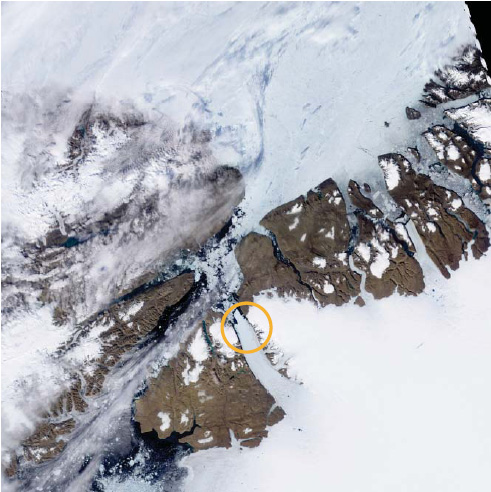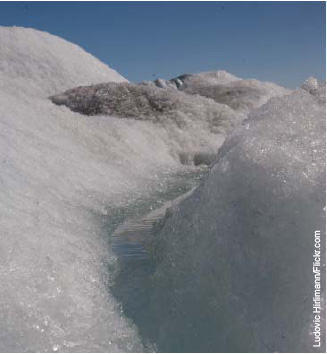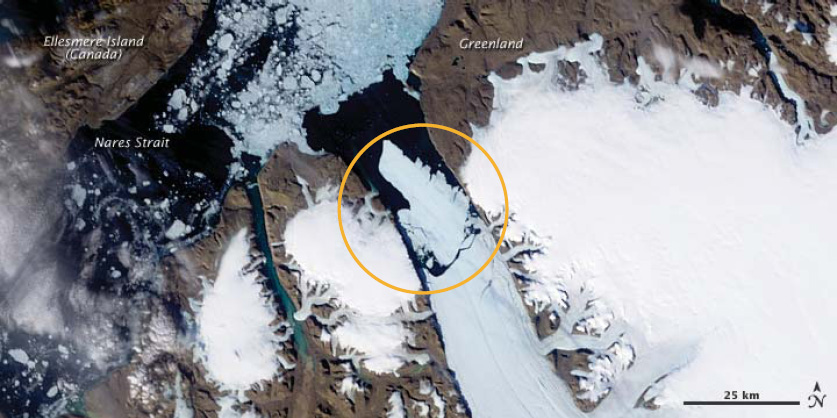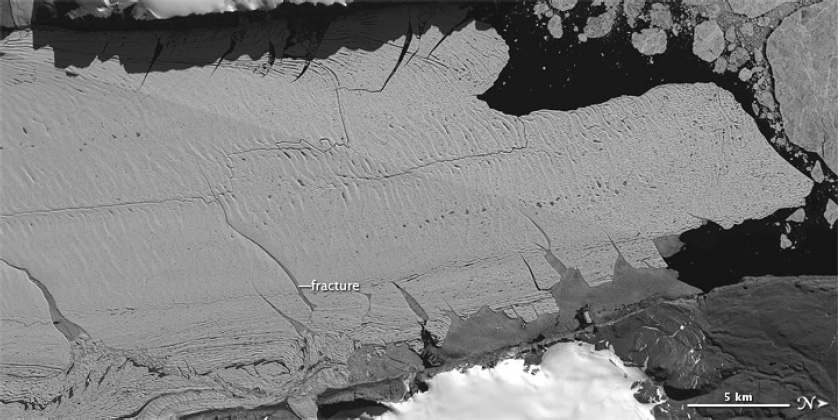|
Having trouble reading this email? Download the PDF.

Thematic Focus: Climate Change and Ecosystem Management
Huge Iceberg Breaks off Greenland’s Petermann Glacier
Why is this issue important?
Glaciers are naturally dynamic, slowly changing in shape and size as they move. When a glacier enters the sea, new icebergs form as pieces break off, or calve, from the glacier.
How much calving occurs depends on the glacier's growth rate, determined by the amount of new snow and the speed at which it moves and melts. Studies on changes in glacier calving
are important pieces of information in helping determine the impacts of climate change.

Figure 1: The calving of a giant iceberg illustrated by satellite imagery from 28 July (left) and 5 August 2010 (bottom). The iceberg is expected to drift into
the Nares Strait either blocking it or breaking up into smaller pieces (NASA 2010).



Figure 2: Large fractures in the glacier tongue as observed on 22 July 2010 (Source: NASA 2010).
What are the findings and implications?
On 5 August 2010, researchers from the University of Delaware, USA, reported that the Petermann Glacier along Greenland’s northwestern coast had lost about a quarter of its
70-km long floating tongue (Figure 1). Petermann Glacier is only 1 000 km south of the North Pole and is one of Greenland’s two largest remaining glaciers that have shelves or
tongues extending into the Arctic sea. The glacier’s new calf is 251 km2, or about four times the size of Manhattan Island.
Fractures, which relieve pressure on ice tongues and allow them to stretch, often precede iceberg calvings. Such cracks had been observed in the Petermann glacier
(see Figure 2), so the break-up was anticipated.
The new iceberg is expected to float south in the Nares Strait, break up and eventually reach the Atlantic in about two years. The calving of an iceberg this size was last observed
in 1962, although there has been a lot of glacier calving in the region over the past decade, which coincides with the warmest decadal average global temperature. More of Greenland's
ice sheet is expected to melt as temperatures in the Arctic rise. Researchers estimate that Greenland contributes about 15 percent of current sea-level increases of 32 mm per decade.
Should the entire Greenland ice sheet melt (which would take several centuries at current and predicted rates of global warming), sea-level would rise about seven metres (Climate Central 2010).
References
Climate Central. (2010). Accelerated Ice Loss from Greenland. http://climatecentral.org/gallery/graphics/accelerated_ice_loss (Accessed on 22 November 2010).
NASA (2010). Ice Island Calves off Petermann Glacier. http://earthobservatory.nasa.gov (Accessed on 11 August 2010).
UD (2010). Greenland glacier calves island 4 times the size of Manhattan, UD scientist reports. University of Delaware Daily, 6 August. http://www.udel.edu/ (Accessed on August 11, 2010)
Information is regularly scanned, screened, filtered, carefully edited, and published for
educational purposes. UNEP does not accept any liability or responsibility for the accuracy, completeness, or any other quality of information and
data published or linked to the site. Please read our privacy policy and
disclaimer for further information.
|









